Shorting Lousy Stocks = Lousy Returns?
Even the worst stocks have their time in the limelight
March 2023. Reading Time: 10 Minutes. Author: Nicolas Rabener.
SUMMARY
- Shorting stocks with poor features was unattractive throughout most of the last decade
- Combining features would not have improved performance
- It only started working again in 2022
INTRODUCTION
Playing the stock market should be easy. When the economy is booming, buy equities. When it’s deteriorating, short them.
Stock selection shouldn’t take much effort either — we just need to apply the metrics from the factor investing literature. In bull markets that might mean focusing on cheap, low-risk, outperforming, small, or high-quality stocks, and in bear markets, the inverse.
Of course, in practice, equity investing is neither easy nor effortless.
First, not even economists can really pinpoint when an economy goes from boom to bust. Economic data isn’t released in real time and is often revised. It may take quarters if not years to determine precisely when the tide turned. Second, in the recent, long-running bull market, buying stocks with high factor loadings has not been a winning formula. For example, the Goldman Sachs ActiveBeta U.S. Large Cap Equity ETF (GSLC) — the largest multi-factor product, with almost $11 billion in assets under management (AUM) — has underperformed the S&P 500 by 10% since its launch in September 2015 (read Multi-Factor Smart Beta ETFs).
But what about shorting stocks? How has that worked as a strategy? Let’s explore.
SHORTING STOCKS WITH POOR FEATURES
To identify what stocks to short, we focused on five factors: value, quality, momentum, low-volatility, and growth. The first four of these are supported by academic research, and while the growth factor is not, we included it in our analysis given its popularity among investors (read What Are Growth Stocks?).
We created five indices composed of the top 10% of the most expensive, low-quality, low-momentum, high-volatility, and low-growth stocks in the S&P 500 and shorted them. To isolate any excess returns from this strategy, we added a long position in the stock market. We rebalanced our portfolios each month and added 10 basis points (bps) to simulate transaction costs.
From 2005 to 2022, shorting low-growth and low-momentum stocks effectively delivered zero excess returns, while doing the same for low-quality and high-volatility stocks yielded negative returns. Bets against low-growth stocks worked well until about a year ago, when Amazon, Meta, and other high-growth companies started to underperform.
Three portfolios crashed when the stock market recovered from the global financial crisis (GFC) in 2009. Why? Because the stock prices of Citigroup and other overleveraged and unprofitable financial firms had been sputtering and highly volatile, but when governments and central banks stepped in to ensure these companies didn’t fail, their share prices soared.
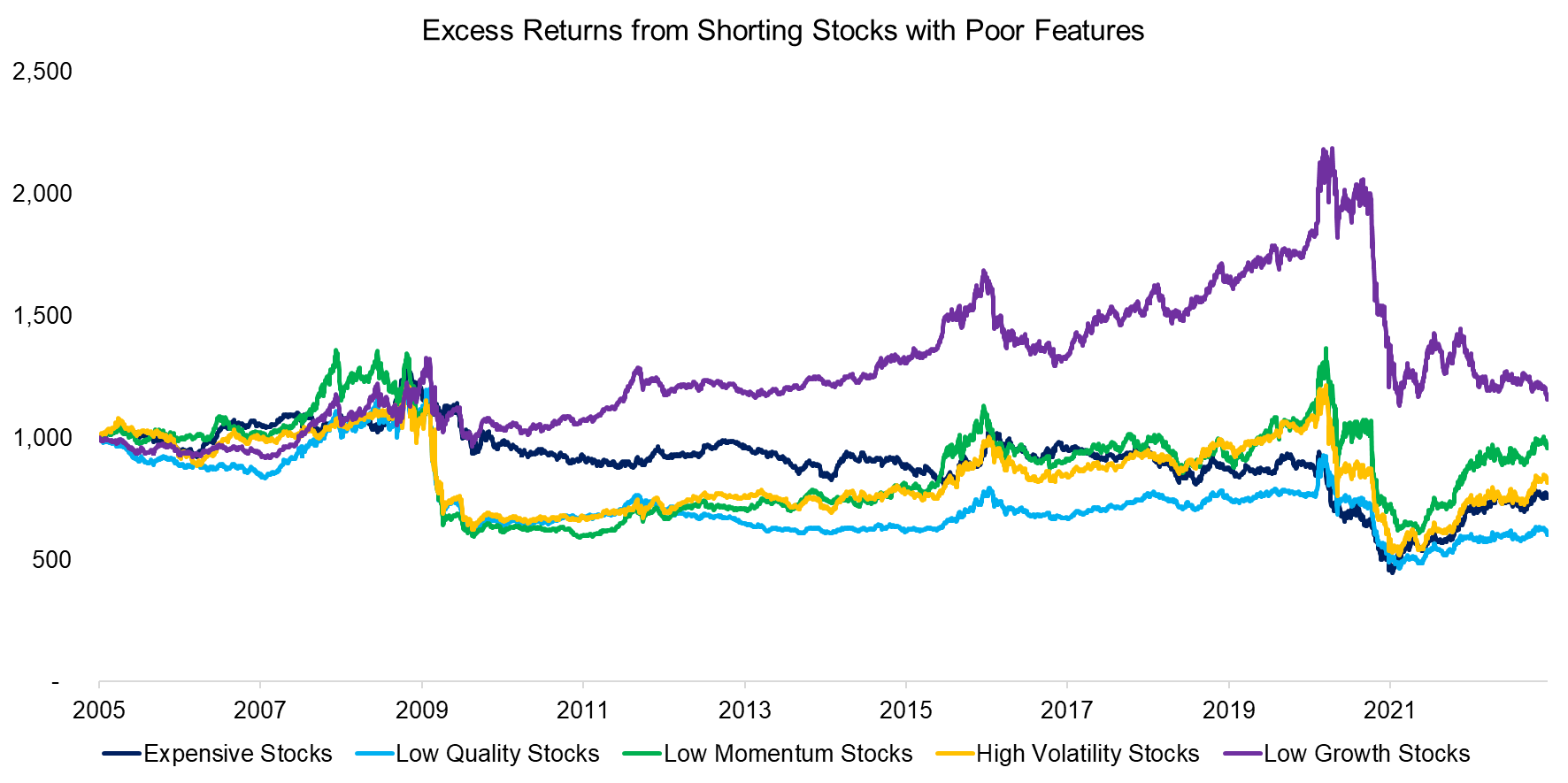
Source: Finominal
BREAKDOWN BY SECTORS
Although some of these portfolios followed similar trajectories, the underlying portfolios were quite varied.
Tech and health care dominated the expensive and high-volatility portfolios over the 17 years under review. Real estate stocks tend to be highly leveraged, so screen poorly on quality metrics. Consumer discretionary companies made up the largest contingent in our portfolio of underperforming stocks. Real estate, financials, and energy stocks all demonstrated comparatively poor sales and earnings growth.
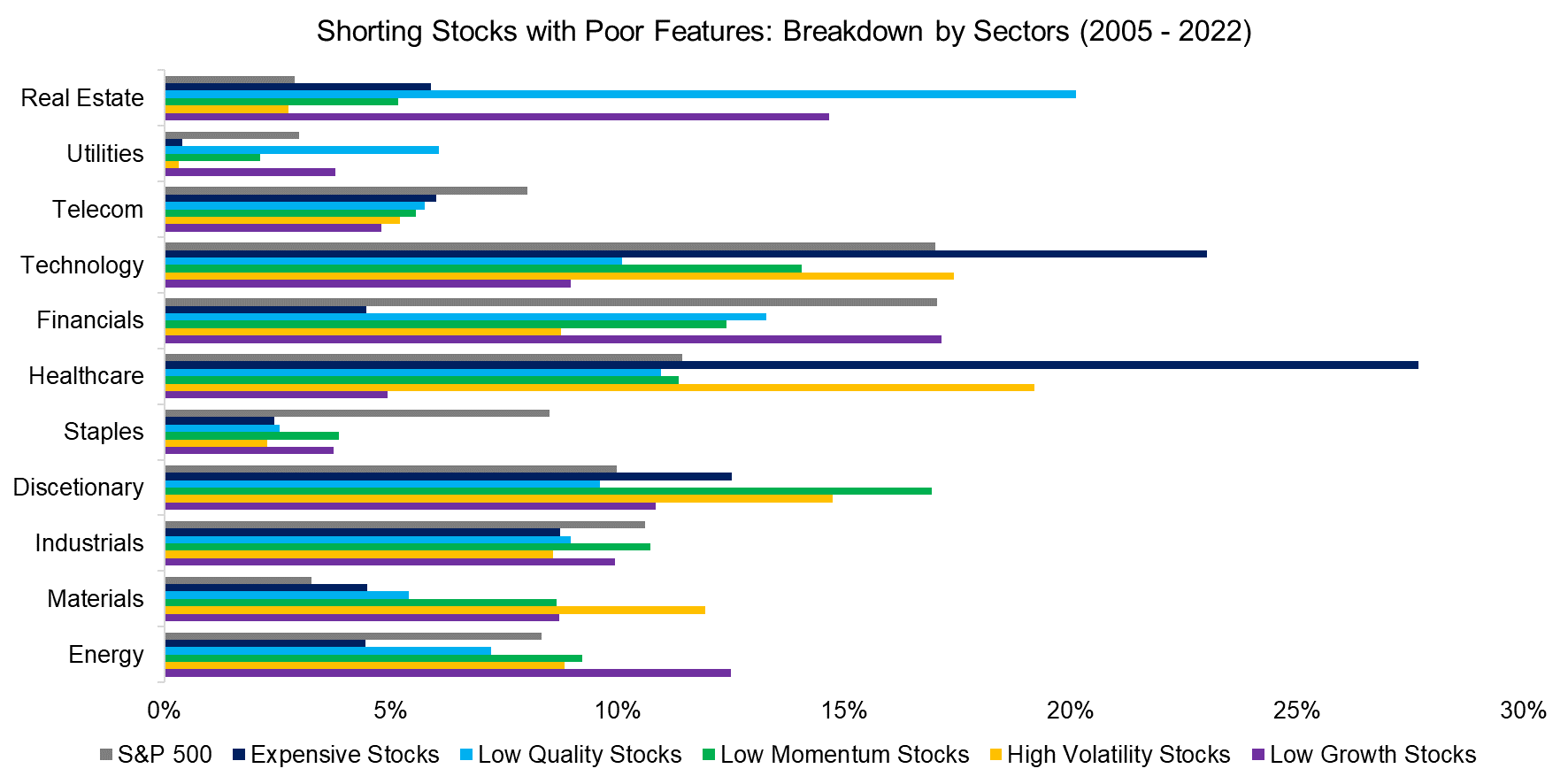
Source: Finominal
CORRELATION ANALYSIS
Stocks with poor features shared certain relationships. The excess returns of low-quality, low-momentum, high-volatility, and low-growth stocks were all highly correlated. Expensive stocks had low but positive correlations with the other four portfolios.

Source: Finominal
SHORTING STOCKS WITH MULTIPLE POOR FEATURES
While high correlations among stocks with lousy features does not bode well for a portfolio composed of stocks with multiple lousy features, we applied the intersectional model to build a portfolio of expensive, low-quality, high-volatility, low-momentum, and low-growth stocks (read Multi-Factor Models 101).
This portfolio had substantially different sector weights compared to the S&P 500. Health care, technology, and real estate dominated, while utilities and staples were underrepresented.
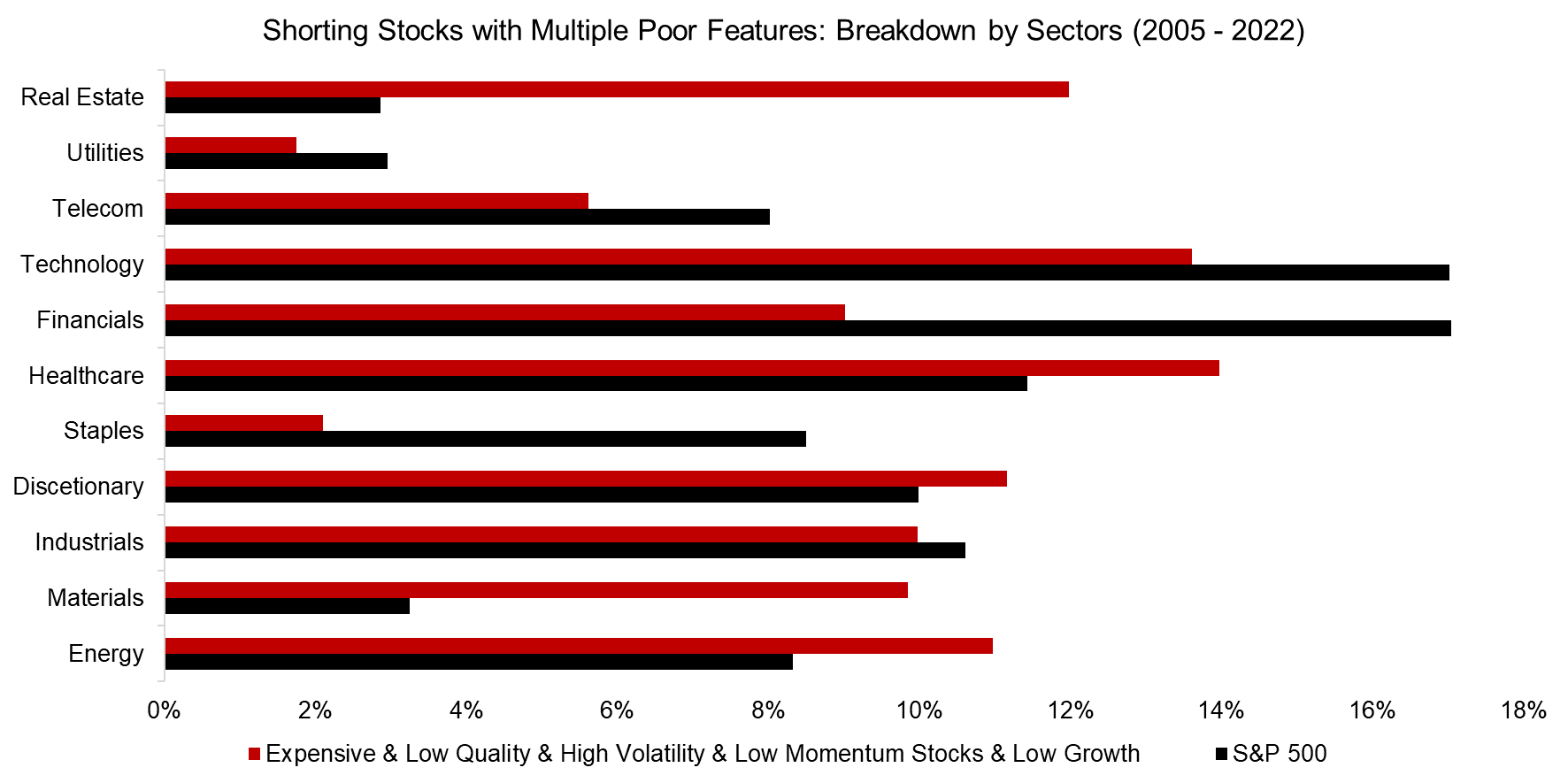
Source: Finominal
But what about the portfolio’s fundamental and technical metrics? We compared the rankings of the top 10 stocks in our portfolio with those of the S&P 500. Snap scored the worst, followed by cruise line operators and biotech companies.
These stocks do not rank poorly on all metrics. For example, they exhibited relatively high sales growth. Naturally, the more features used in the stock-selection process, the fewer stocks fulfill all criteria.
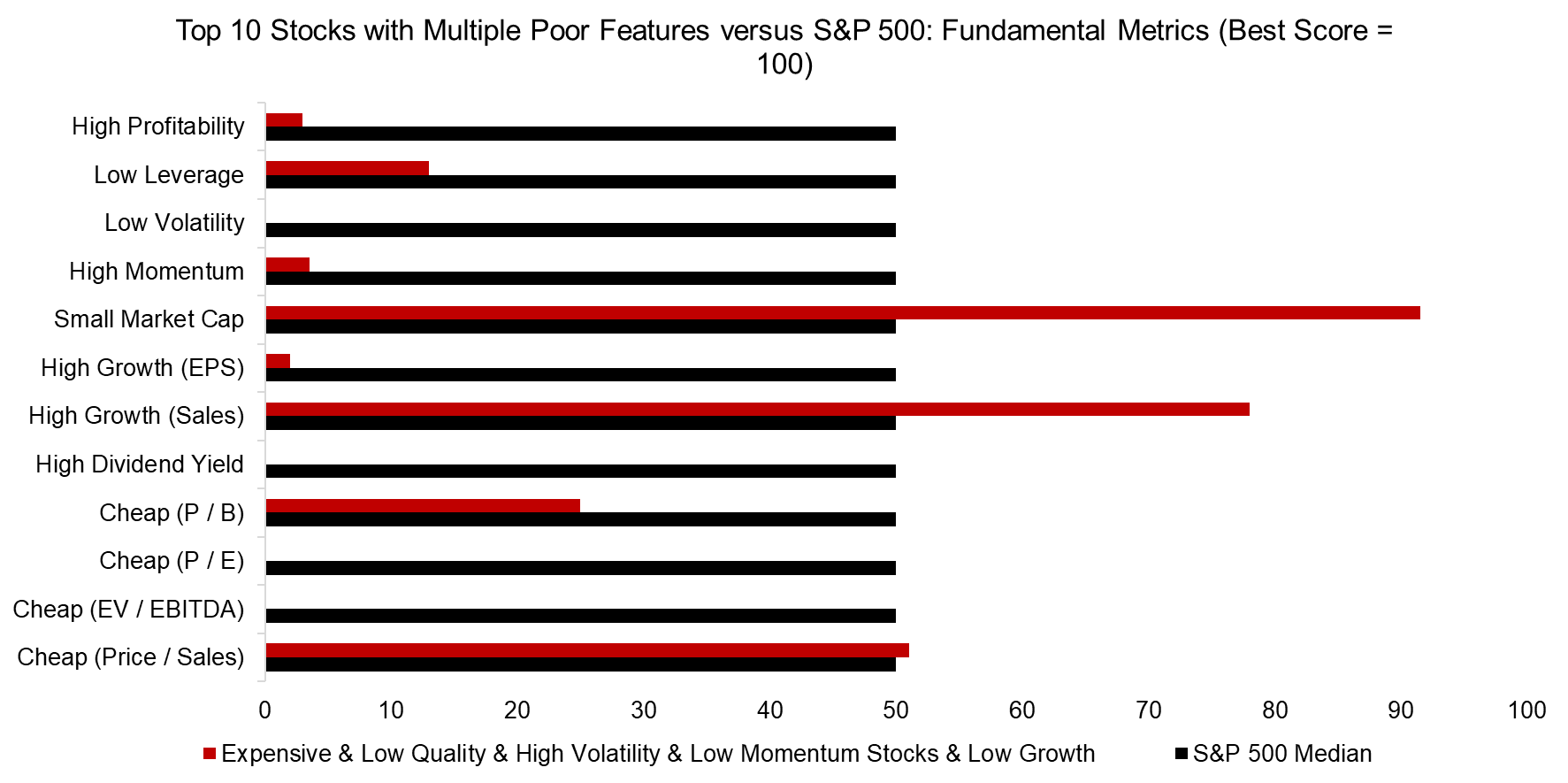
Source: Finominal
So, what sort of excess returns did combining all these features in the stock-selection process deliver? We began with our expensive stock portfolio and added the other metrics one by one. Performance did not improve.
Shorting these stocks would not have been a good bet between 2009 and 2021 (read How Painful Can Factor Investing Get?), though it would have worked before the GFC and again in 2022.
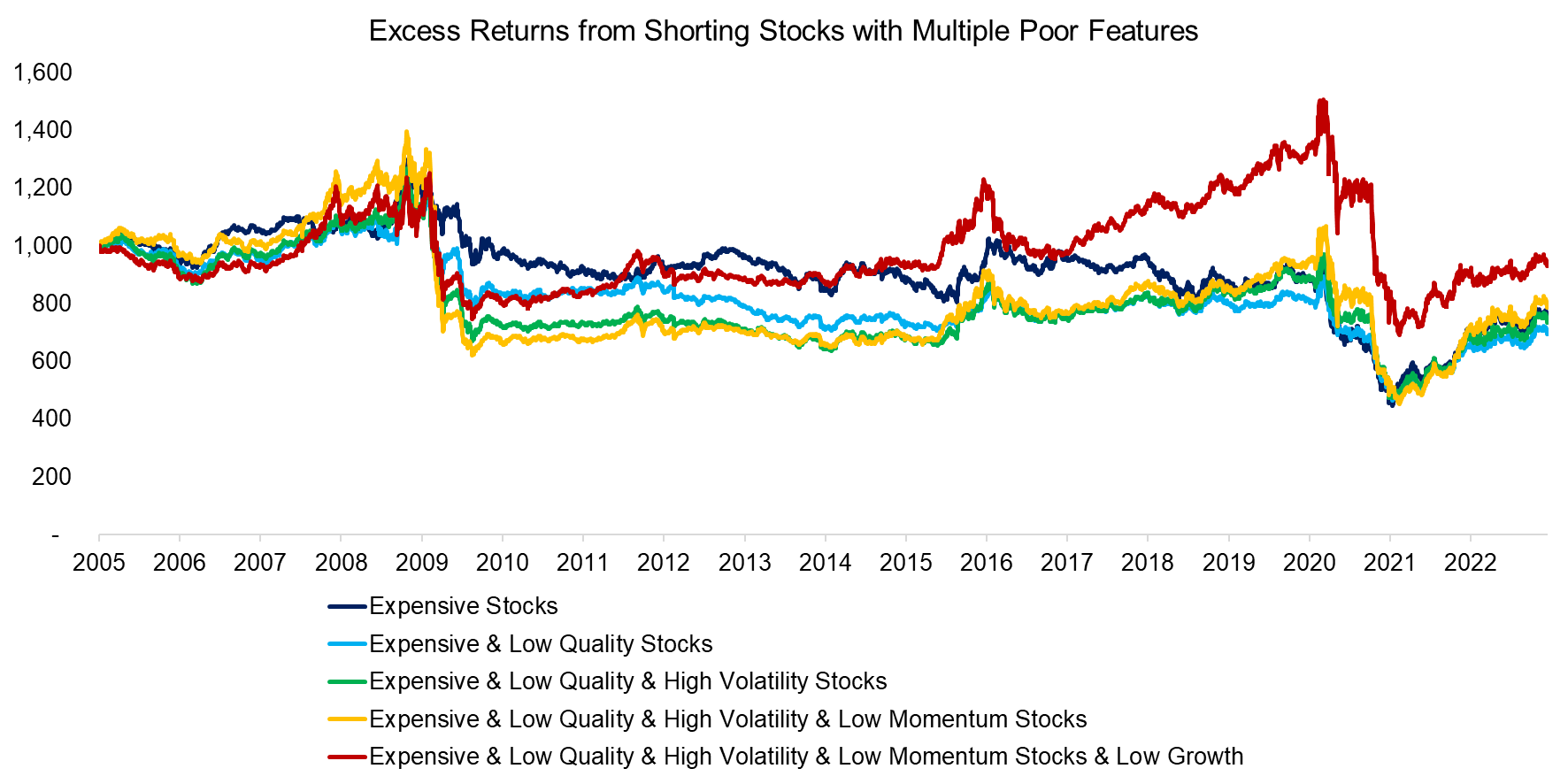
Source: Finominal
FURTHER THOUGHTS
Why is shorting stocks so difficult? Research from Robeco indicates that factor investing primarily works on the long side, so investors can generate excess returns by buying cheap or outperforming stocks but not much from shorting expensive or underperforming stocks. Research from AQR finds just the opposite, that shorting such stocks can be profitable.
The challenge of short selling may lie in the asymmetry between making money on the long and short sides. Losses on long positions top out at 100% since stock prices can’t go negative. Losses on short positions, on the other hand, are theoretically infinite.
Famed short seller Jim Chanos shorted Tesla for years. In 2020, the electric automaker’s stock had truly abysmal fundamental metrics and was trading at an excessive valuation. Nevertheless, shares rose by more than 2000% thereafter (read The Hard-Knock Life of Short Sellers).
Lousy stocks are sometimes great investments.
RELATED RESEARCH
The Hard-Knock Life of Short Sellers
How Painful Can Factor Investing Get?
Factors: Shorting Stocks vs the Index
What Are Growth Stocks?
Multi-Factor Models 101
Multi-Factor Smart Beta ETFs
REFERENCED RESEARCH
When Equity Factors Drop Their Shorts, Robeco, 2019
The George Costanza Portfolio, AQR, 2018
ABOUT THE AUTHOR
Nicolas Rabener is the CEO & Founder of Finominal, which empowers professional investors with data, technology, and research insights to improve their investment outcomes. Previously he created Jackdaw Capital, an award-winning quantitative hedge fund. Before that Nicolas worked at GIC and Citigroup in London and New York. Nicolas holds a Master of Finance from HHL Leipzig Graduate School of Management, is a CAIA charter holder, and enjoys endurance sports (Ironman & 100km Ultramarathon).
Connect with me on LinkedIn or X.

